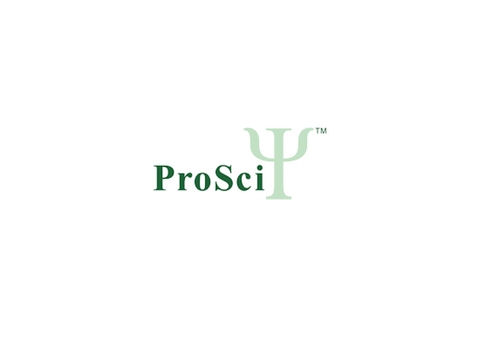Product Description
Human Sialin (SLC17A5) ELISA Kit | AE19124HU | Abebio
Species Reactivity: Human (Homo sapiens)
Abbreviation: SLC17A5
Alternative Name: AST; FLJ22227; FLJ23268; ISSD; NSD; SD; SIALIN; SIASD; SLD; membrane glycoprotein HP59|sialic acid storage disease|sialin|solute carrier family 17; member 5
Application: ELISA
Range: 0.312-20 ng/mL
Sensitivity: 0.113 ng/mL
Intra-Assay: ≤5.2%
Inter-Assay: ≤8.1%
Recovery: 0, 96
Sample Type: Serum, Plasma, Other biological fluids
Detection Method: Sandwich
Analysis Method : Quantitive
Test Principale: This assay employs a two-site sandwich ELISA to quantitate SLC17A5 in samples. An antibody specific for SLC17A5 has been pre-coated onto a microplate. Standards and samples are pipetted into the wells and anySLC17A5 present is bound by the immobilized antibody. After removing any unbound substances, a biotin-conjugated antibody specific for SLC17A5 is added to the wells. After washing, Streptavidin conjugated Horseradish Peroxidase (HRP) is added to the wells. Following a wash to remove any unbound avidin-enzyme reagent, a substrate solution is added to the wells and color develops in proportion to the amount of SLC17A5 bound in the initial step. The color development is stopped and the intensity of the color is measured.
Product Overview: The SLC17A5 gene encodes a vesicular excitatory amino acid transporter (VEAT) with dual physiologic functions. When present in synaptic vesicles in the central nervous system, sialin is responsible for vesicular storage and subsequent exocytosis of aspartate and glutamate. When present in lysosomes, it acts as an H (+) -coupled sialic acid exporter. The isolated sequence encoded a predicted 495-residue protein with homology to members of the anion/cation symporter (ACS) family of transporters. This family contains eukaryotic inorganic anion transporters (such as Na+/phosphate cotransporters) as well as prokaryotic organic anion transporters (including H+/acid sugar symporters for hexuronate and glucarate) .
Stability: The stability of ELISA kit is determined by the loss rate of activity. The loss rate of this kit is less than 5% within the expiration date under appropriate storage condition. The loss rate was determined by accelerated thermal degradation test. Keep the kit at 37°C for 4 and 7 days, and compare O.D.values of the kit kept at 37°C with that of at recommended temperature. (referring from China Biological Products Standard, which was calculated by the Arrhenius equation. For ELISA kit, 4 days storage at 37°C can be considered as 6 months at 2 - 8°C, which means 7 days at 37°C equaling 12 months at 2 - 8°C) .
 Euro
Euro
 USD
USD
 British Pound
British Pound
 NULL
NULL








